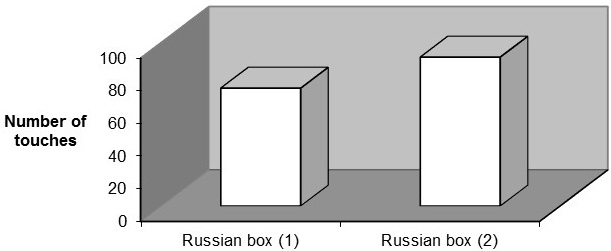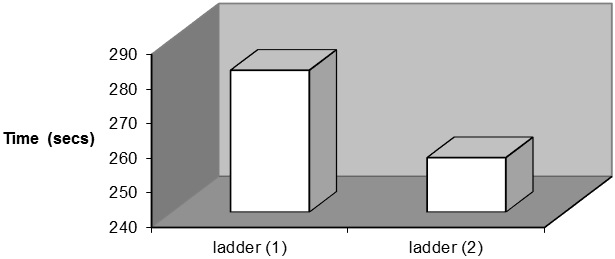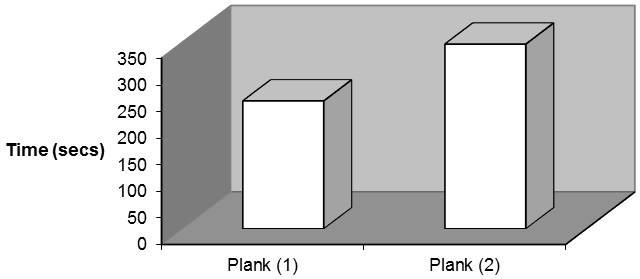INTRODUCTION
With the ever changing face of athletics in America, improving sports performance is the primary focus of most athletes. This, however, can be a complicated issue with many conflicting ideas surrounding the best way to improve performance. Obviously, sport selection is the determining factor when shaping a training program. For example, sports that emphasize power, whether anaerobic alactic (baseball, weight lifting) or anaerobic lactic (football, basketball, soccer), are often hindered by training programs that seek to improve aerobic fitness.1 Most sports require unplanned movements or reactions that require a quick burst of energy intermittently dispersed between bouts of running or sprinting. However, for performance to improve, physiological adaptations must occur to the nervous, muscular, and cardiovascular systems.2
This has led to the development of many different modes of training from plyometrics to more systematic approaches like modified resistance training programs, both of which have shown to transfer to certain activities such as sprinting.3 Because, sports performance is closely associated with intermuscular coordination (the interaction of many muscles to control a movement4 ); training programs designed to promote intramuscular coordination (neural adaptations within a single muscle) may not be as promising when discussing training and performance transfer.5 Baker6 however, demonstrated that beginning athletes could achieve transfer benefits from a more general training program but as they become more adapted to that program, specificity played an increasingly important role in performance. Because neural adaptations to resistance training are the primary contributor during the first 8 to 10 weeks of a training program7 many beginning athletes will see plateaus in performance shortly after this period. Plateaus can also be traced to other factors such as overtraining, inadequate recovery, lack of nutrition and imagination.8 These factors have led to the development of programs that manipulate the different variables of training (periodization) in order to continually improve.
Buford et al9 demonstrated that if volume is kept consistent then different models of periodization (linear, weekly undulating, daily undulating) are all equally effective in improving strength. Because general training programs can improve performance early in training6 and more variation is needed to continue to elicit gains in long-term performance,2 can training programs be developed to address both of these needs as well as the need to incorporate variables such as intermuscular coordination while not ignoring other components like anaerobic capacity, power and core strength all while avoiding situations that lead to overtraining? The purpose of this study was to determine if a randomized style of sports performance training could continue to improve performance in previously trained male adolescents. “Randomized” training can best be described as a method of training that has no set training regimen for a given day but looks to improve variables of performance by complex power movements interspersed with traditional and nontraditional strength training, agility and foot work drills, increasing anaerobic capacity, improving balance and core strength all of which play a vital role in “on field” performance. It was hypothesized that randomized sports performance training would continue to improve performance in subjects who were previously trained and familiar with this style of training.
METHODS
Experimental Approach to the Problem
The goal of this investigation was to evaluate the effects of randomized training on performance variables during the time frame when improvement would normally tend to plateau and determine if randomized sports performance training could elicit gains in strength and performance after the neuromuscular adaptation phase of training. In this setting, “randomized training” referred to the inclusion of components of performance: aerobic endurance, speed, agility, explosiveness, flexibility for upper and lower body as well as core. For example, the workouts during any 1 week would include all of the previously listed components as well as 1 day when the volume of work might range from 10,000 to 40,000 lbs during a 1 hour workout.
Each of the participants had already been clients at a sports performance center (RepsUSA) and had a minimum of 12 weeks training experience. Thus, they were familiar with the style of randomized training and may have been getting close to the point where a plateau often occurs. Thus, the beginning of the 6 weeks when measurements were taken was used as the control point for the study
Subjects
Eight male participants, between the ages of 13 and 16 years, included athletes from high school varsity and junior varsity football, basketball, and baseball teams. Each participant took part in their respective sport-specific training at their high schools and then attended 2 to 3 sessions per week at REPS. This study was reviewed and approved by the Institutional Review Board (IRB) and all potential risks and procedures involved in the study were explained to the subjects. Written informed consent to participate in the study was obtained from the parents along with assent from the adolescents. Participants were disqualified from the study if they failed to train at REPS at least 2 days per week. The training program was performed over a 6 week period and participants underwent benchmark assessments prior to week 1 and after the 6th week. Benchmark assessments included timed ladder drill, Russian box, and plank. (See Appendix A for an explanation of the assessments).
Procedures
Assessment tests were performed after a regular REPS warm-up but prior to training. Participant’s body weight was taken during week 1 and 6 using a dial floor scale. Girth measurements of the upper arm, thigh and chest were also taken at week one and six using a Gulick measuring tape (Creative Health Products, Ann Arbor, Michigan, USA). The training protocol consisted of 6 weeks of a randomized style of sports performance training already familiar to the subjects. Because of the nature and style of REPS training the specific daily protocol over the course of the 6 weeks could not be documented as with a standard resistance or other performance-based training styles. Training sessions lasted one-hour per day and on any given day subjects would have been asked to perform simple exercises such as push presses, hurricane squats, log bench presses, isokinetic knee flexion/extension, isokinetic squats, isokinetic hip flexion and extension, deadlifts, lunges, or core work in various sets and repetition schemes. Subjects would have also been asked to participate in performance-based tasks such as slide board, shuttle runs, sprints, step-ups, footwork drills, complex power movements, etc. Within a given week, however, all major components of performance were addressed (as mentioned previously) but never in the same fashion.
Statistical Analysis
Descriptive data are reported as means and standard deviations (SD). Data were analyzed using Microsoft Excel and two-tailed, paired t-tests were used to determine if there were significant differences between week 1 and 6 in the bench mark assessments as well as girth measurements. Alpha level for significance was set a priori at p≤0.05.
RESULTS
A total of eight male participants, with a mean age of 14.6±0.9 years participated in this randomized sports performance training study. The means and SD values for age, height and weight are summarized in Table 1. The analysis, using the paired t-tests, determined that there were significant differences (p≤0.05) between pre- and post-training performance assessments (Russian box, plank, and timed ladder), but not for the girth measurements (arm, thigh, chest) and body weight (p≥0.05). Subjects averaged an increase of 19 touches per minute on the Russian box. A mean decrease of 25 seconds was seen on the timed ladder drill and an average increase of 107 seconds was seen in the plank. Table 2 summarizes the data from the performance assessments.
Figures 1, 2, and 3 graphically depict increases in performance assessments between week 1 and week 6.
The pre- and post-training results from the weight and girth measurements are listed in Table 3.
Table 1: Subject data.
Demographic data for the 8 adolescent males who participated in this study.
| Parameters |
Mean |
SD |
Max |
Min |
| Height (m) |
1.7 |
0.12 |
1.96 |
1.63 |
| Weight (kg) |
77.6 |
15.3 |
100 |
55.9 |
| Age (years) |
14.6 |
0.9 |
16 |
13 |
Table 2: Pre- and post-test performance assessment data.
Results of the pre- and post-testing for the measures of strength, agility and speed for the 8 participants.
|
Mean |
SD |
p-value |
| Russian box (number of touches) |
|
|
0.012 |
| -pre |
72.13 |
20.27 |
|
| -post |
91.13 |
30.99 |
|
| Plank (seconds) |
|
|
0.044 |
| -pre |
239.86 |
194.67 |
|
| -post |
346.57 |
272.09 |
|
| Ladder drill (seconds |
|
|
0.008 |
| -pre |
281 |
39.62 |
|
| -post |
255.75 |
33.23 |
|
Figure 1: Pre- and post-training Russian box.
These data show the increased number of touches during the Russian box drill that the participants were able to perform following 6 weeks of “randomized” training.

Figure 2: Pre- and post-training timed ladder.
These date indicate the increased speed that occurred in the timed ladder drill following the six weeks of “randomized” training.

Figure 3: Pre- and post-training plank.
These data show the increase in the number of seconds that the participants were able to hold in the Plank position indicating an increase in strength following “randomized” training.

Table 3: Pre- and post-training weight and girth measurements.
The means and standard deviations for the participants prior to and following the 6 weeks of “randomized” training.
|
Mean |
SD |
p-value |
| Weight (kg) |
|
|
0.945 |
| -pre |
77.6 |
45.3±4.7 |
|
| -post |
78.2 |
67.69±13.95 |
|
| Girth Measurements |
| Arm (cm) |
|
|
1.0 |
| -pre |
29.9 |
4.1 |
|
| -post |
29.9 |
3.4 |
|
| Thigh (cm) |
|
|
0.118 |
| -pre |
50.9 |
8.0 |
|
| -post |
50.3 |
7.6 |
|
| Chest (cm) |
|
|
0.111 |
| -pre |
91.9 |
8.3 |
|
| -post |
92.8 |
9.2 |
|
DISCUSSION
The purpose of this study was to determine if randomized sports performance training (RSPT) could continue to produce significant gains in performance assessments in previously trained children. The significant differences in the pre- and post-training performance assessments were consistent with the predicted hypothesis. Similar to other models of periodization,2,5,6,9 RSPT did result in increased gains in performance assessments in previously trained male adolescents as seen with faster times (timed ladder, Russian box) and strength (plank). One factor that plays a role in the continued increase in performance is the fact that RSPT addresses both general training (resistance training) and performance specific training (plyometrics, agilities, etc.) either during the same training session or separate sessions. General resistance training has been shown to increase performance in untrained individuals6 whereas variation and progression has been shown to contribute to further improvements in performance in previously trained athletes.2 This style of training allows athletes to properly recover from working one group of muscles in a specific way while continuing to train other areas on subsequent days. Since the RSPT practiced at RepsUSA is truly randomized, the nervous system as well as the musculoskeletal system is constantly taxed not allowing the body to fall into specific patterns of movement or joint angles during lifting and drills. This has the potential to constantly alter muscle-firing patterns, increase recruitment and force production because as new movements and exercises are being learned, activity in the primary motor cortex increases, which is where motor unit activation begins.2 Ideally, electromyography of muscles, determination of any changes in percent body fat as well as levels of blood lactate would have been helpful in documenting intensity of effort had they been available. A part of the warm up during each session were the ladder drills. Participants were already very familiar with the sequence and the increased motivation that occurs when knowing that they are being timed and tested may have contributed to the decrease in time. It appears that another advantage to the randomized style of training and its effect on performance might be the potential to continue to train at high intensity and volume levels while avoiding training staleness and subsequent decreases in performance. This could be more of a psychological factor because many athletes become bored with their training regimen and frequently experience performance losses due to the fact that their training intensity is lowered because of lack of motivation.8 Randomization constantly provides fresh workouts so athletes can look forward to training and continue to train at high intensities and volumes. Training intensity and volume both play roles in performance gains.2 One reason why the continued gains in performance might have been seen is that most athletes participating in the study trained at the same time with one another. The competitiveness among the athletes could be considered extra motivation and allow them to produce greater gains in performance.2,10 A drawback of the study was that these subjects were also in high school and their training there was not controlled. It was also not possible to include a control group, therefore, each participant acted as his own control. Future considerations in research using RSPT could be to compare other types of training protocols to RSPT and measure improvements in performance between the style or using RSPT over longer periods of time to distinguish if gains in performance can be continued. Also, devising further performance assessments to test all performance variables should be considered.
CONCLUSION
It was concluded from these results that randomized sports performance training can continue to increase gains in performance assessments in previously trained adolescent males. These findings support the research hypothesis that stated gains in performance would be seen over a 6 week training period in participants that were previously trained in the randomized style of training.
ACKNOWLEDGEMENTS
The authors wish to thank Steve and Kelly Senay, owners and operators of RepsUSA for allowing this data to be collected in their club and with their athletes.
AUTHORS CONTRIBUTIONS
Both authors have contributed to the data collection and writing of this manuscript.
CONFLICTS OF INTEREST
The authors declare that they have no conflicts of interest to declare.
PARTICIPANTS CONSENT
Statement was approved by the Institutional Review Board for the Protection of Human Subjects at our university.








